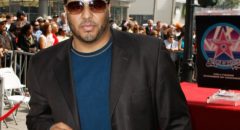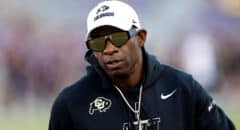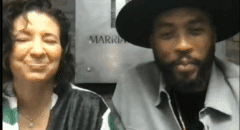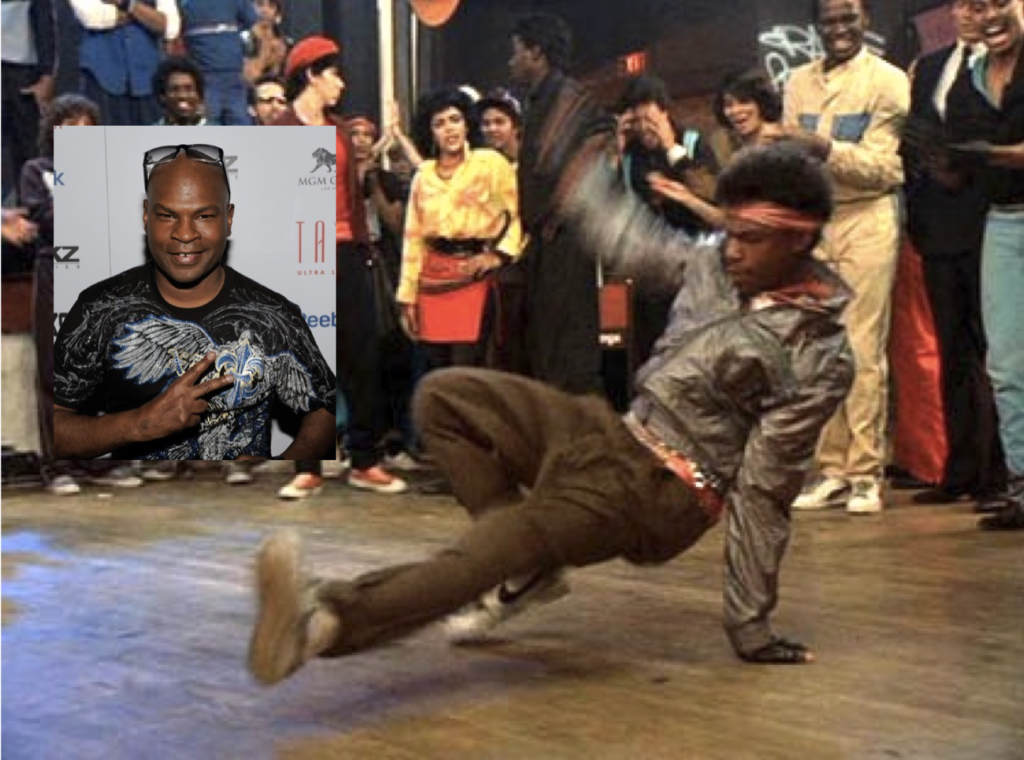 If you grew up in the 1980's, many will remember the sights and sounds of the era including the emergence of break dancing. At the height of breakdancing was a slew of break-dancing movies, most notably Breakin' and "Breakin' 2: Electric Boogaloo.
If you grew up in the 1980's, many will remember the sights and sounds of the era including the emergence of break dancing. At the height of breakdancing was a slew of break-dancing movies, most notably Breakin' and "Breakin' 2: Electric Boogaloo.
One of the stars of that movie and of the breakdancing movement was Michael "Boogaloo Shrimp" Chambers who played Turbo in the films.
Chambers, along with Adolfo Gutierrez Quiñones, better known as "Ozone" in the Breakin' films, were a part of history and are still making history today. Both served as choreographers for a number of different artists including Lionel Richie, Madonna, Luther Vandross and Three Six Mafia.
"It was the experience of a lifetime. Because I didn’t realize I was a star. I was just a kid," said Chambers. "I realized I had a job and I had to listen to my studio teacher and all these adults. Matter of fact, people didn’t treat me like I was a star. The feeling of being on the set and not having really known actors it was like okay this is like a student film and this is the guy and that’s the guy and everybody was just kinda carefree until the dance scenes happened. That’s when everybody, the extras (and) everybody on set, started giving us respect because they had never seen us dance. They had never seen anybody dance like us, that was historical. So when we were not dancing we were just oh they’re just extras or they’re just somebody, but every time we danced and every time there was a dance scene it was like silence and awe on that set. People were like wow or even finding a way to invite people on that set."
Chambers got his stage name "Boogaloo Shrimp" from his father, an ex-Air Force military man who had settled down to raise a family in Wilmington, a seaport city with a mixed community of Polynesians, Mexicans and African Americans. It’s not too far from the same area where Snoop Dogg and Ice Cube both grew up.
Michael’s father worked for Van de Kamp’s seafood and Chicken of the Sea, and he used to call Michael, his youngest, “Shrimp,” which also ties right into the whole seaport thing too — Michael is Afro-Creole American — because the “Boogaloo” part of his name originally comes from the New Orleans area, but it also became one of the buzzwords used in a new type of dancing, pop-locking (from “popping” and “locking”), originally practiced by a guy named Boogaloo Sam (Sam Solomon), who founded a 70s dancing group, The Electric Boogaloos, who were named for “Do The Boogaloo” by James Brown, which was a type of dance that Brown popularized.
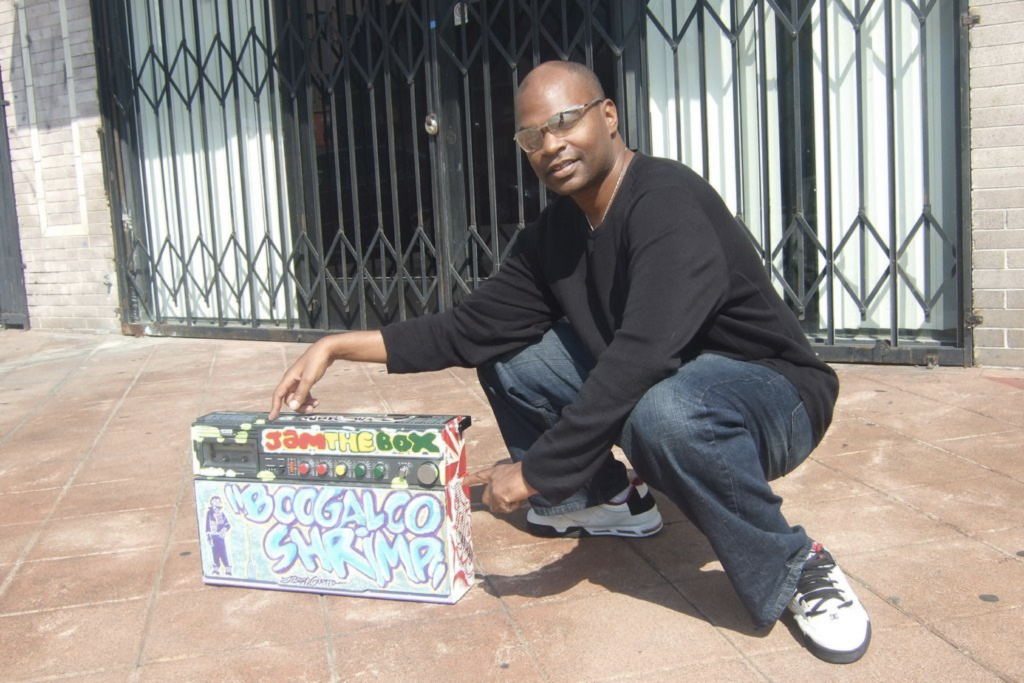
Chambers’ mentor is a rarely remembered dancer named Mark Benson, who goes by the stage name of King Boogaloo Tut. There were other individual dancers — like Adolfo “Shabba Doo” Quiñones — and influential dance groups too, obviously, and in interviews now Michael often mentions that he and one of his contemporaries, Pop N Taco (Bruno Falcon), came along after first taking the moves they’d seen danced by the Rock Steady Crew, The New York City Breakers, and the Electric Boogaloos, and then adding their own.
Chambers and his friends entered dance contests, and the first time he says that he made any money was when his older brother took him to perform at the Redondo Beach Pier, with just a boom box and a bucket, and when they were done dancing, the bucket would be full of bills to split between themselves, a few hundred dollars a week.
Many don't know but Michael also worked with one of the most famous Michael's of all: Michael Jackson.
"I was featured in a spot on Eye on LA and there was a segment on what the kids were doing in Hollywood," explains Chambers to Soul Train. "And the street dance segment featured dancers that were on Hollywood Boulevard. They featured us on the show, and that got Michael Jackson’s attention and made me stand out."
"A talent coordinator invited me and fellow dancer, Bruno "Poppin’ Taco" Falcon, to the Jackson compound, and we met the family and we basically showed them our styles of dancing. Shortly after, Poppin’ Taco started working with Michael as his choreographer and went on the road with him."
Poppin' Taco became Jackson's choreographer for nearly 18 years after that.
"Michael saw me again on Lionel Richie’s tour. He saw the feedback that we got from his tour," continues Chambers. "I ultimately helped Michael with his technique. What happened is it started out with the moonwalk, with my sliding and...
... floating technique. The first job that he did after our sessions of working together was the Victory Tour. I didn’t know if he was going to use the stuff, but talk about a highlight of my career–it’s documented, and you will see Michael Jackson at Dodger Stadium–doing a new version of “Billie Jean” that’s totally different from Motown 25. He implemented some techniques he learned from me into that. I had no idea he was going to do it, so I was shocked when I was at the show and saw him doing it. He did a lightening fast back slide, which is a much faster progression than he did on Motown 25. He started floating in place, which is a circular glide. That’s what I was known for at the time, doing a backslide combination into a circular glide. Later on, when Mr. Jackson’s schedule would permit, we would get together and he would ask me what I’m doing and where my style was. Back in 1987 I told him it was about the kicking and when he saw that, that was all he needed, because he was a great dancer and a brilliant student of anybody’s work. That’s how he got so good; he would put in the research and study it and then master it. In 1987 I showed him a claymation movement, and when he came out later that year the world saw a totally different Michael that was more reserved and cooler. He really just got comfortable with his solo dancing and no longer relied on his moonwalk. So he had a variety of styles in his dance–a little Fred Astaire, and a lot of pop locking. He started getting real smooth in his lines and his grinding and it was immaculate."
Now, Chambers is teaching dance, making appearances and helping mold the next generations of dancers.





